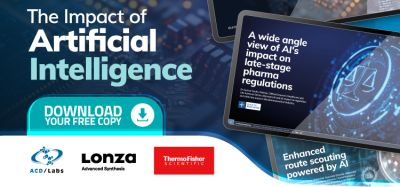Exploring and deploying blockchain solutions in the life sciences and healthcare sectors
Posted: 28 August 2020 | James Baillieu (Bird & Bird), Jonathan Emmanuel (Bird & Bird) | No comments yet
Blockchain is perhaps best known as the technology on which Bitcoin and other cryptocurrencies are built. Notwithstanding that adoption in the life sciences and healthcare sectors is still in its relative infancy, companies and other organisations in these sectors are increasingly exploring and deploying blockchain solutions. Here, legal experts James Baillieu and Jonathan Emmanuel discuss how businesses are increasingly exploring blockchain and what opportunities it presents.


Records on the blockchain are immutable, ensuring those along the supply chain can be held accountable”
Blockchain – what is it?
A blockchain is a distributed or shared database or ledger that sets out a list of transactions that have been validated by a peer-to-peer network. The peers in this network, often referred to as “nodes”, are computers that have downloaded and implemented the relevant blockchain software. A collection of nodes connected over the internet forms the blockchain network. Each connected node downloads and stores a copy of the database and can perform tasks such as sending transactions for recording on the blockchain.
There are different blockchain networks available that can be exploited to solve different problems. At one end of the spectrum, you have public blockchain networks where anyone can join. Public blockchain networks are truly decentralised. They have no central authority and there are limited or no contracts in place governing the rights and remedies of participants.
At the other end of the spectrum are private blockchain networks. The main difference between public and private blockchain networks is there is a “trusted intermediary” (eg, a consortium) who runs the private blockchain network. If anything goes wrong, a participant has recourse against this entity. The trusted intermediary decides which entities can join the blockchain network and what recorded data can be viewed by whom. As there is more control over who can join a private blockchain network, contracts governing the rights and remedies of the relevant parties play a much more integral role.
Six potential uses of blockchain in the life sciences sector:
- Medical records – Electronic health records could be securely operated on a private blockchain network, protecting patient data and privacy while allowing doctors to access their patients’ medical histories and empowering researchers to use shared data to further scientific research. Blockchain solutions enable permission layers to be built into the system. So, while patients are unable to change or delete medical information inputted by their doctors, they can control access to their profiles by granting full or partial visibility to different stakeholders.
- Supply chain – The integrity of a supply chain is of fundamental importance to pharmaceutical companies, whether ensuring compliance with “track and trace” regulations or helping to combat the circulation of counterfeit drugs. Records on the blockchain are immutable, ensuring those along the supply chain can be held accountable. When combined with other technologies like smart contracts and the Internet of Things, blockchain will also help to accurately monitor the transit storage conditions of pharmaceutical products which should only be administered if stored in a certain way. Blockchain solutions may also help to more closely manage the unique supply chain required for personalised medicines, such as CAR T-cell therapy. Accurately tracking a unique patient-specific supply chain will become increasingly important as more personalised medicines enter the market and the focus on patient experience grows.
- Value-based payments – Existing treatments for many diseases involve treatment on a regular basis with healthcare providers paying fees on a recurring basis. However, certain new treatments – including gene therapies – increasingly involve one-time treatments that are generally expensive (indeed some treatments cost hundreds of thousands of pounds). Given the often constrained healthcare budgets, it is difficult for governments and insurers to fund the full cost of these treatments upfront. Blockchain solutions could form part of a suite of platforms that will link payment to clinical results. Monthly payments could be contingent upon a patient’s clinical outcomes upon reaching certain targets subsequent to treatment.
- Collection of clinical trial data – Pharmaceutical companies are already using blockchain applications to collect clinical trial data. Perhaps the biggest benefit of this is that, once data is added to the blockchain, it is hard for researchers to amend the results without the change being obvious to all parties. As a result, it is extremely difficult for researchers to alter their initial clinical trial hypothesis after analysing their research data. Time-stamping can provide the many stakeholders involved in a clinical trial – often from different organisations and locations – with indisputable proof that data has been recorded at a set time and under a verifiable condition. This information is particularly helpful for inclusion in reports to regulators and for those conducting peer reviews.
- Access to clinical trials – Both clinical and more practical logistical barriers often make it difficult for patients to participate in clinical trials, notwithstanding their eligibility. Blockchain – together with other technologies like telemedicine – provides a potential platform for hosting clinical trials remotely while at the same time being able to collect trial data securely.
- Incentivising patient behaviour – Companies are increasingly exploring the use of smart contracts utilising blockchain technology to incentivise specific patient behaviours. For example, micropayments or other rewards (such as tokens or points) could be given to patients if they share their personal health data for clinical research or follow a dedicated treatment plan.


Considerations for life science companies looking to incorporate blockchain solutions
Private blockchain contracting
Organisations will be attracted to private blockchain networks because of the greater certainty as to the rules governing how the blockchain network operates and the opportunity to build in protection through contracting. There are generally two main contracts:
- a blockchain services contract, which is between the blockchain developer and the trusted intermediary. The trusted intermediary will license the right to use the blockchain developer’s software and will engage the blockchain developer to provide it with ancillary services related to the support of the network, as the trusted intermediary’s subcontractor; and
- a participation contract, which is the contract between the trusted intermediary and each participant that wants to gain access to the blockchain network. This contract governs the obligations of the trusted intermediary and the participants.
It is important that any commitments made by the trusted intermediary under the participation contract are appropriately backed up under the terms of the blockchain services contract. Key legal and practical issues that come up include liability (what happens if data is lost or corrupted), security (what security measures does the trusted intermediary have in place to ensure the integrity of the network), service levels (uptime of the network) and intellectual property (IP) (who owns the IP in any bespoke developments).
IP in the blockchain – who owns it?


The user-facing app is what each participant accesses and will interoperate with the backend blockchain software via an application programming interface (or API). One of the key IP battlegrounds between the blockchain developer and trusted intermediary is who owns the IP in the user-facing app; this is most likely to be decided by the needs and bargaining positions of the parties.
Irrespective of ownership, the user-facing app should, where possible, be developed in such a way that it is able to interoperate with other blockchain solutions. Otherwise, the trusted intermediary will be “locked-in” to the blockchain developer’s solution.
Are there legal challenges with blockchain?
One of the key challenges is that regulation is playing catch up with the cutting-edge technical solutions already being used. For example, the General Data Protection Regulation (GDPR), which sets out the European legal framework for processing personal data, was not drafted with blockchain technologies in mind. As a result, there are a number of key principles of the GDPR which conflict with the fundamental features of any blockchain. For instance, the GDPR requires companies to be able to delete or update personal data, while individuals also have the right to be forgotten. However, if personal data is recorded on a blockchain, it is not clear how these requirements can be complied with given the immutable nature of blockchains. One solution is not to store any personal data on the blockchain, with personal data being stored “off ledger” instead where the data can be freely amended or deleted.
One of the key challenges is that regulation is playing catch up with the cutting-edge technical solutions already being used”
Another option, proposed by the French Data Protection Authority, the Commission nationale de l’informatique et des libertés (or CNIL), is to use encryption technologies – such as “salt” or “pepper” hashing – to make the underlying personal data practically inaccessible. However, such a proposal does not necessarily solve the conflict but merely mitigates its impact. For now (and until further guidance on this point is published by regulators), the law and technology are incompatible, with no legislation or guidance explaining how business can resolve this disparity.
Conclusion
There has been a lot of interest around blockchain and over the next few years, we expect to experience a “blockchain spring” where organisations, armed with the experience they have learned from previous proof-of-concept projects, focus on more limited use cases for blockchain centred around better data exchange and better data reliability.


About the authors




Issue
Related topics
Related organisations
Commission nationale de l'informatique et des libertés (CNIL)









